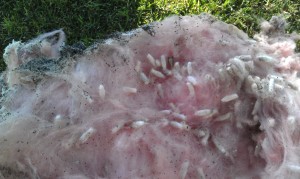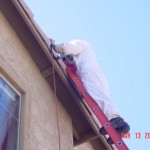Successful strategies to prepare your home for winter: 
The key in my book is to keep an eye out throughout the year. If Africanized Honeybee’s have taken up residence and you didn’t notice it for a year you will have more problems because of the time involved to build more colony and honey storage. So here is my list:
- Check your home outside for any holes that may have developed over the past year – seal them, I suggest copper wool (won’t rust) or steel wool. Check for signs of termites, such as termite tubes or tunnels or damage. This can also be damage from water as well.
- Check inside your home, look for baseboard or paint that seems to be cracked or crinkled which might suggest termite activity.
- Only bring in enough firewood that you will use immediately, firewood can bring in pests like spiders, beetles or termites.
- Repair any screens that have been damaged.
- The winter is also a great time to check your attic, it’s cooler. Check for animal signs like feces or nesting materials. Check the roof for signs of water staining or damage, if capable check the roof from the outside – check shingles or tiles for any damage.
- If this is a cabin, drain the water lines and clean up. This will allow you to notice things on your return visit, remember HantaVirus and the clean up procedures.
- Now is also a good time to call your local Pest Management Professional for an inspection, especially here in Arizona because of the monsoon and the rains which make termites more active.

















